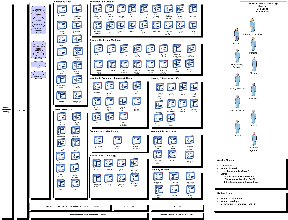In any technology dependent organization, IT units provide the basic infrastructure and operations such as networking, productivity tools, security, and servers. Given this role, IT is often considered a utility just like water and electricity. However, IT has to play a greater role in today’s world of student affairs and higher education. IT needs to fulfill a higher role of a driver/partner in an organization’s innovation strategy simply because 1) if we do not evolve, we will become increasingly irrelevant in this world of consumer technologies, and 2) the expectations and demands of our customers require that business and IT units must collaborate to provide solutions that deliver at the very least, a satisfactory user experience, in a timely manner.
Consumer-driven innovations require a shift in how IT organizations must approach our role or we may see ourselves increasingly irrelevant. Will IT organization completely cease to exist in the near future? I highly doubt it just because there are legacy applications that require maintenance and operations such as networking, and help desk will continue to be needed. However, I wrote about the trends in student affairs technology and their implications to IT last year, including the business units’ increasing reliance/preference on consumer technologies like cloud, social media and mobile to do their business. One of the complaints I generally hear in my leadership role within student affairs IT is that sometimes it takes too long for us to provide our customers with the solutions they need and sometimes we are seen as a department of ‘No!”. For this reason, some of them have found it more convenient to use external services that are often free and faster to implement, with or without IT involvement. The challenge for IT however is that the need to keep up with consumer-driven innovations is constrained by the need to maintain legacy systems and “keeping the lights on” with limited resources.
The needs of our technologically dependent customers require collaboration between IT and business units to provide a good user experience delivered in timely manner. Our primary customers, the students and our staff are predominantly within the “Net Generation” or the “Millennials” generally characterized by their use of technologies. Studies by Pew Research on their use of social networking sites and Educause’s ECAR National Study of Undergraduate Students and Information Technology 2011 provide some statistics and insight on students and technology. Along with these new technologies come expectations and needs that are different from even a decade ago when mobile, social media and cloud computing did not exist. For example, the ability to work remotely, for some of our staff, is no longer a convenience but a necessity. In addition, as we recruit more out-of-state students (including international students), the need to communicate and how we provide services for them have also changed. The use of web conferencing tools for group webinars and individual advising has increased at our university in the last year.
For IT to stay relevant in student affairs (and in any organization), we need to realize that the systems we design and build need to evolve from systems of transactions to systems of engagement. We need to design systems that go beyond automation and efficiency. Because of social media and mobile computing, our customers now expect real-time two-way communication conducted in multiple channels. In addition, how we do business within IT and in student affairs in general must also change. I wrote this blog post last year about student affairs as social business. It’s a post about how the use of social media in student affairs will evolve so that it will no longer be limited to communication with our customers. Social media will be used for internal communication and collaboration to enhance the business processes of student affairs.
I do not know what new technology will be introduced three to five years from now so building systems based solely on current technology and what we can only guess to accommodate a few years from now is a challenge. However, creating an IT organization that is agile and responsive to the dynamic business needs is required for student affairs IT organizations to go beyond its role as a utility to a role of a driver/partner in student affair’s innovation strategy. To be agile and responsive requires IT organizations and its leadership to take full advantage of the collective knowledge of our staff and customers. It is imperative that we recognize their creativity and provide a culture that rewards innovative thinking as well as processes that promote free flows of ideas from all levels of our organization.
[Related blog posts on technology in student affairs/higher ed]

